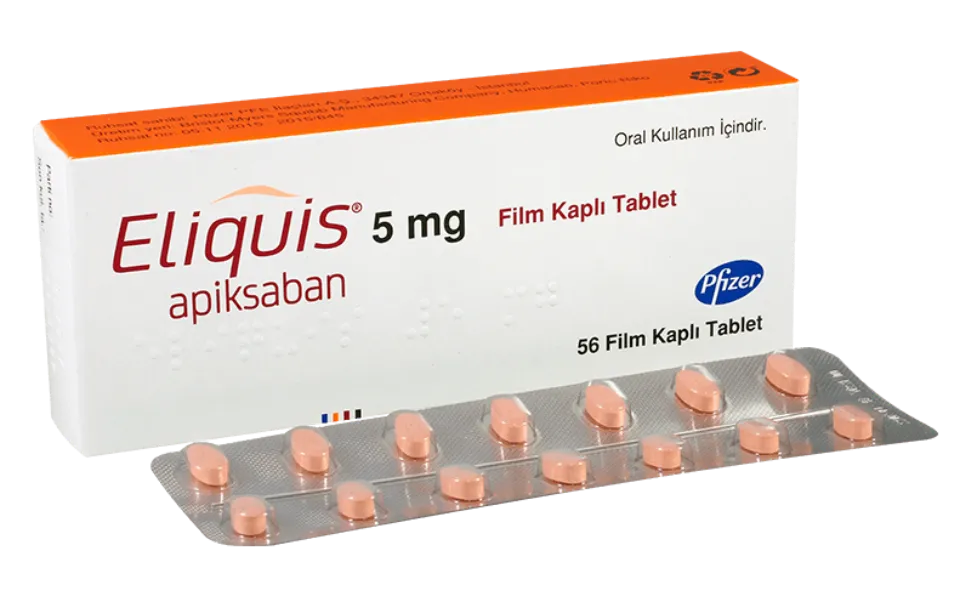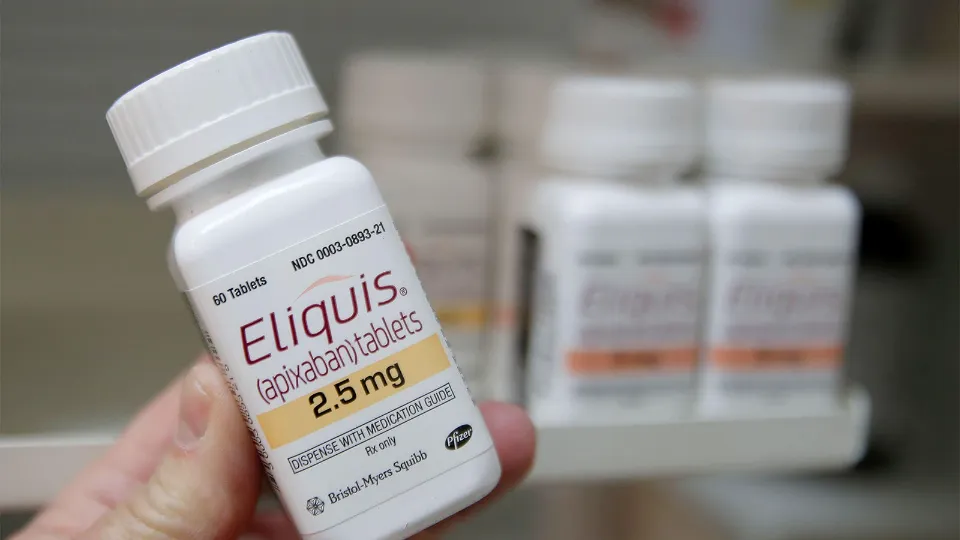A prescription medication with apixaban as its active component is sold under the brand name Eliquis. The anticoagulant drug apixaban is used to lower the risk of blood clots forming in the body as a result of a number of medical conditions in adults. Red blood cells, fibrin, platelets, and other proteins form semi-solid clumps called blood clots.
Eliquis has a half-life of about 12 hours. Three to four hours after taking an oral dose, this medication reaches its peak concentration.
Given how well-liked this medication is currently, it makes sense to learn more about it, including how long Eliquis stays in your system.
What is Eliquis?
Eliquis is a FDA (U.S. Medication produced by Pfizer and Bristol-Myers Squibb that has been approved by the Food and Drug Administration is available to adults 18 years of age and older. Eliquis hasn’t been clinically tested for safety and effectiveness in children or adolescents under the age of 18.
- Apixaban, which is sometimes prescribed to lower the risk of blood clots, is sold under the brand name Eliquis.
- Factor Xa (FXa), an enzyme important in the production of compounds that cause blood clotting, is selectively inhibited (blocked) by Eliquis (apixaban), a medication. Apixaban decreases the likelihood of blood clotting by inhibiting FXa.
- Factor Xa inhibitors are the group of medications that includes Eliquis. Eliquis can also be referred to as an anticoagulant.

How Long Does Eliquis Stay in Your System?
Within 3 to 4 hours of oral administration, Eliquis reaches its maximum concentration in your body. Within a few hours, Eliquis’ effects on blood clotting factors become apparent.
After your last dose, Eliquis will stay in your system for about 24 hours and have a half-life of about 12 hours.
Eliquis typically only stays in your system for a short time because it has a short half-life. Its clearance rate is approximately 3.3 L/hour. By way of urine and feces, this medication is removed from the body. Renal excretion accounts for about 27% of Eliquis’ total clearance. This medication leaves the body through direct intestinal and biliary excretion in feces.
Eliquis does not linger in your system for very long, so it is unlikely to be detected by drug tests. Eliquis doesn’t have any information on the precise detection windows for these tests. Examples of common blood tests include the following:
- Urine drug test: This kind of examination looks for specific substances in urine samples, such as cocaine and alcohol. Although this is dependent on the types of substances being tested for, urine acidity, and other factors, detection windows for urine tests can range from a few hours to about a month.
- These drug tests look for opiates, cocaine, and other substances in samples of blood, plasma, or serum. These tests typically only have a few-day or longer detection window.
- A hair drug test looks for the presence of drugs like amphetamine, opiates, and other substances in hair follicle samples. For these tests, the detection windows could be a few months or less.
Eliquis’s blood clotting effects won’t completely disappear from your system until 24 hours have passed.
Upsides and Downsides of Eliquis
Upsides
- Used to lower the risk of blood clot and stroke in people with nonvalvular atrial fibrillation (AF).
- Additionally used to prevent the occurrence of deep vein thrombosis (DVT), or blood clots in the deep veins, after hip or knee replacement surgery.
- Eliquis is additionally used to treat DVT, pulmonary embolism (PE), which is a condition in which blood clots lodge in the lungs, as well as to reduce the risk of recurrent DVT and PE.
- Does not call for routine blood tests.
- In 2018, andexanet alfa, an antidote, was authorized. The risk of significant bleeding is minimal in reality.
- The dosage is simple. Most people should take 5mg twice daily as directed. The dosage is 2.5 mg twice daily for those who meet at least two of the following criteria: body mass index of 60 kg or less, age at least 80 years old, and serum creatinine of at least 1.5 mg/dL.
- 2.5 mg twice daily beginning 12 to 24 hours after surgery is the recommended dosage when used to stop DVTs from forming after hip or knee replacement surgery.

Downsides
If you are between the ages of 18 and 60, take no other medication or have no other medical conditions, side effects you are more likely to experience include:
- The most frequent side effects include minor bleeding, nausea, anemia, and hemorrhage. There may also be gastrointestinal side effects like constipation, vomiting, diarrhea, or abdominal pain.
- You should dial 911 if you experience severe or uncontrollable bleeding, pink or brown urine, tar-like red or black stools, bloody coughing or vomiting, or blood clots (which may resemble coffee grounds). Additionally, if you experience any stroke symptoms (such as sudden headache, dizziness, or loss of vision; difficulty speaking clearly; one-sided facial drooping); or blood clot symptoms (such as sudden, severe shortness of breath; pain, heat, or swelling in a limb), you should seek emergency medical attention right away.
- If Eliquis needs to be stopped for any reason other than significant bleeding or finishing the course of therapy, think about switching to another anticoagulant because early discontinuation has been linked to thrombotic events (the development of a blood clot within a blood vessel).
- In patients taking Eliquis who are also undergoing spinal puncture or epidural or spinal anesthesia, there is an increased risk of spinal or epidural hematomas resulting in long-term or permanent paralysis. The risk is higher in people who take other drugs that affect blood clotting (like NSAIDs or aspirin), have had traumatic or repeated spinal procedures, or have had spinal deformity or surgery in the past.
- Some individuals, such as those who have artificial heart valves or who are actively bleeding, might not be a good fit.
Summary
Eliquis is used to treat and prevent a number of medical conditions linked to blood clots by decreasing the blood’s ability to clot. There is no need for monitoring, and an antidote called andexanet alfa is available if there is significant bleeding. After your last dose, Eliquis will stay in your system for about 24 hours, with a half-life of about 12 hours.
Related Posts
- How Long Does Soma Stay in Your System? (2023)
- How Long is Flexeril in Your System? (2023)
- How Long is Sudafed in Your System? (Solved)
- How Long Do Sleeping Pills Stay in Your System?
- How Long Does Diphenhydramine Stay in Your System?
- How Long Does Eliquis Stay in Your System?
- How Long is Benadryl Good For? (Solved)










